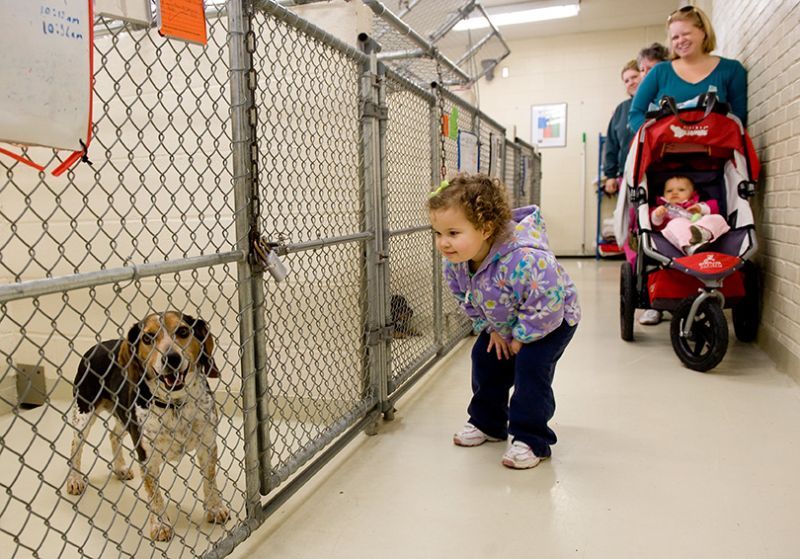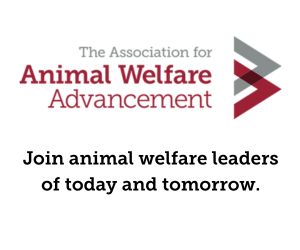Identify adoption barriers and put your policies to the test
How do you identify and correct adoption barriers?

A key element in achieving Adopters Welcome is to recognize when policies automatically exclude entire segments of your community (e.g., seniors, students, people on a fixed income, renters, individuals who don’t have access to veterinary care, etc.) from adopting a pet. By embracing Adopters Welcome, organizations make a commitment to evaluate their policies to determine where barriers have popped up and how they can support potential adopters instead.
Step 1: Map your data
Determine where your adopters are coming from and compare to your service area. Collect the addresses of those who have adopted from you over the past three years and map them using programs such as Google’s My Maps or invest in a product such as ESRI’s ArcGis Pro so you don’t have to create the map manually. (This is an excellent project for volunteers!) You may find that your adopters are only coming from areas of your community where home ownership is common or where socioeconomic status is higher and that you’re missing out on connecting with potential adopters throughout your service area.
Step 2: Investigate the barriers that are limiting your reach
Determine why potential pet adopters in your service area haven’t yet made you their source for pets. This will help you uncover missed marketing opportunities and find new sources of great adoptive homes. It may take some digging to determine the underlying reason behind each missed adoption, but don’t give up! If there’s an area of missed opportunities in your community, it’s not because the residents in that area don’t have or want pets, it’s because you haven’t yet connected with them.
Step 3: Fix it
Now that you know why potential adopters aren’t choosing your organization to find a pet, take steps to correct it. Perhaps you need to extend your adoption hours so commuters can come in the evening, or you need to partner with major employers to feature adoptable pets in their workplaces. Maybe you need to bring pets into the communities that have trouble reaching your facility, or you need to print and post bilingual materials.
In some cases, the segments of your community that aren’t able to adopt from your organization are likely to be underserved in many ways, not just in adoptions. These communities are often isolated from services most people take for granted, such as veterinary care and access to quality pet care products. These locations may benefit from a more strategic approach that includes access to resources that you or other agencies in the community provide. If your service area includes underserved communities, our Pets for Life Community Outreach Toolkit will guide you through the development and implementation of a community outreach program that works.
Connecting with untapped parts of your community doesn’t happen overnight. It takes time to build familiarity and trust, and that requires having a visible and consistent presence and listening to your community about what they need from a partnership with your organization.
Put your policy to the Adopters Welcome test
How can you tell whether or not a policy is truly necessary to protect pets? This six-step test will help.
Sample scenario: Ms. Smith, who lives in a second-floor apartment, wants to adopt Zippy, but your current policy requires all adopters have fenced-in yards.
Step 1: Identify the policy
Dogs will only be adopted into homes with fenced yards.
Step 2: Specify the goal of the policy and the intention behind it (what good thing is this policy intended to secure)?
This policy is intended to ensure that adopted dogs will never be hit by cars or become lost.
Step 3: Examine whether this policy achieves the goal 100% of the time, with no exceptions or conditions
Fencing only works if it’s well-constructed and maintained, if it’s high and sturdy enough, if the dog is only in it for short periods of time, and if the dog has enough enrichment to keep occupied the entire time they’re outdoors. Fences also don’t account for the times that a dog is on walks in the neighborhood. Keep in mind that the average American moves 11 times in their lifetime; a fenced yard only reflects the potential adopter’s current situation. So the answer to this is actually “maybe.”
Step 4: Examine the broader implications of saying "no." Could your policy actually undermine the goal?
What effect will a denial have on the animal who could potentially be adopted?
While there’s a slight chance that denying Zippy’s adoption might save him from potential harm, chances are much greater that Zippy will miss out on bonding with a wonderful new adopter who will exercise him on a leash every day rather than leaving him alone for long periods of time. If you have a shelter, the longer Zippy stays with you the more likely he is to become ill or to deteriorate behaviorally. Not to mention that the resources (foster/kennel space, caretaker time, care costs, etc.) tied up in Zippy could have been used to help another at-risk animal.
What effect will a denial have on the potential adopter?
If Ms. Smith lives in an apartment, chances are she’s already aware that Zippy will need to be walked multiple times a day. Even if she had a fence, she wants a dog so they can take walks together. If she’s already committed to adopting a pet, she will most certainly get a dog from another source if your organization denies the adoption, and it may be an unaltered, unvaccinated one at that. Ms. Smith will also likely spread the word about how ridiculous your “fenced yard only” policy is.
What effect will a denial have on your agency?
You’ll still have the burden of caring for Zippy, which will prevent another animal in need from occupying that space. Ms. Smith’s friends, neighbors and family will be influenced by her negative experience with your organization, and that word will spread. Since negative perceptions can be hard to sway, you may have fewer adoptions and donations, fewer participants in your volunteer and foster programs, fewer participants at your events and fewer clients using your services.
What effect will a denial have on your competition?
A “fenced yard only” policy will eliminate virtually everyone living in apartments. That’s too many people who will have no choice but to acquire their next dog from a breeder or pet store.
What effect will a denial have on your community?
Pets acquired from outside your agency are unlikely to go home fully vaccinated or spayed or neutered. They may contribute to the overpopulation problem in your community, and they may also spread dangerous diseases. Ms. Smith’s negative experience is sure to damage not only your community’s opinion of your agency but all adoption agencies, furthering the divide between your community and animal welfare resources.
Step 5: Examine whether there’s a way to achieve the goal without having the policy in place
Plenty of great dog owners use leash-walking as the primary form of exercise for their pet. Since you already have the benefit of leash laws in your community, talk with Ms. Smith about leash-walking and other forms of exercise she might use with Zippy. Help fit Ziggy with a collar or harness that helps him walk well on a leash and start loose leash walking training while he’s at the shelter.
Step 6: Examine your results
The “fenced yard only” policy doesn’t completely achieve the goal of keeping dogs safely confined outdoors, because it’s fraught with potentially negative effects and its goals can be achieved by other means. To make sure you’re only using policies/procedures that are certain to meet useful goals and not create unnecessary barriers, this policy should be eliminated. If you’re not ready to get rid of it altogether, try a pilot test where you remove the requirement for six months. After six months, analyze your data to see how many new adopters have been able to adopt a dog because you removed this requirement. (Check out our “How to use data to remove unnecessary barriers to adoption” webinar.)
The Adopters Welcome approach is about finding, engaging and supporting more adopters. You’ll be much more successful in matchmaking if you communicate with your potential adopters. Moving forward, for every policy that comes into question, use this six-step test. If your results show that the policy isn’t quite as foolproof as you thought, chances are you can safely let it go or re-create it to be flexible, welcoming and supportive.


